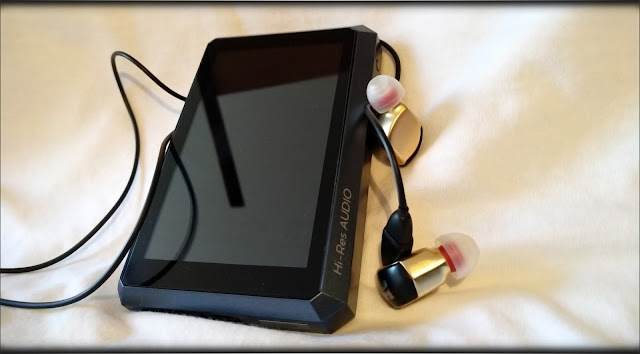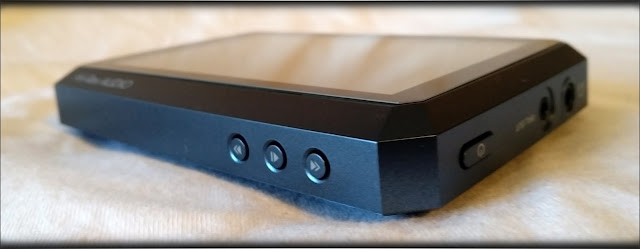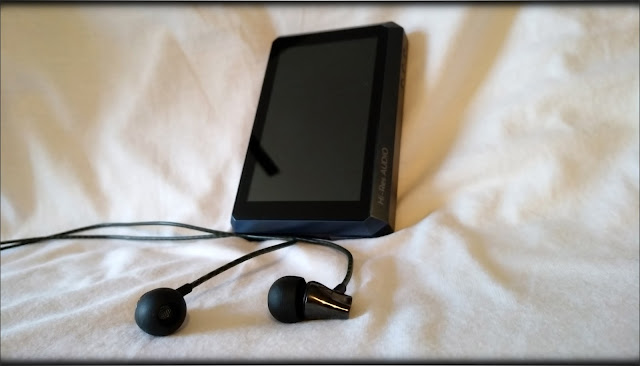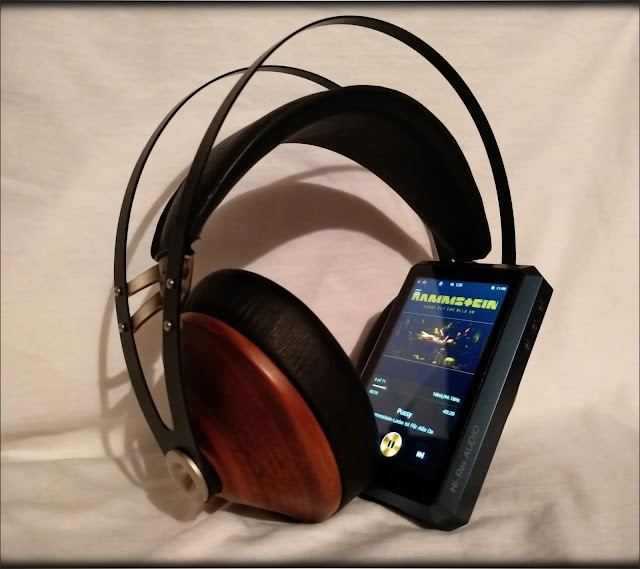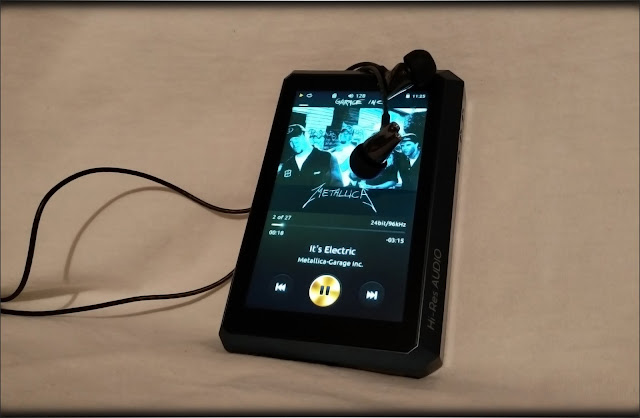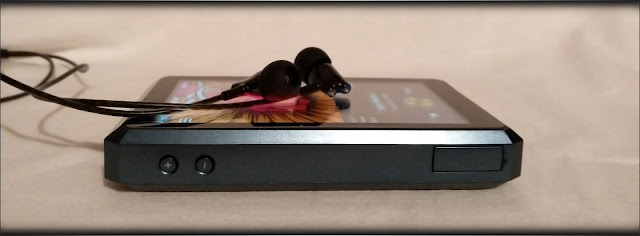Firstly I would like to thank Audio Opus for choosing me to review their new player. This player has been used for quite some time before writing this review.
*disclaimer: This sample was provided for the purpose of writing a review, no incentive was given to write a favourable review. All opinions expressed are my own subjective findings.
Gears Used:
Opus#1s > Inearz P350 / FIBAE 3 / Meze 99 Classics / German Maestro GMP 8.35d

Tech Specs:
http://www.audio-opus.com/?page_id=17532
Packaging, Build Quality and Accessories:
The Opus #1s comes in similar packaging to the rest of the Opus DAP’s, it is simple with the model on the outside and specs on the back. This outer sleeve slides off and you are greeted with a red, thick card box. Slide this open and you will find the DAP held tightly in an inner tray, underneath this tray you will find the accessories. Overall the Opus #1s comes in a great, sturdy box that protects it during shipping and looks great when you are opening the product.
Build quality wise the Opus #1s is similar to the original Opus #1, made of ABS plastic that is strong and well finished, but also light in weight. The front is glass as it is a touch screen player; the back is shiny plastic with a pattern on it. On the sides you have the dual MicroSD slots, along with playback controls. On the bottom you have the micro USB port, and the top you have the power butting along with the headphone outputs. Overall everything is very well put together and it feels like it is built to last.
Accessory wise you get a charging cable; you can opt to buy the leather case for it too which is a high quality Dignis one. You do get some extra screen protectors and a manual.

UI and Features:
The Opus #1s has the same interface as all Audio Opus players; it is a sleek and custom skinned version of Android that has minimal extras included. The interface is super easy to navigate with the usual categories such as album, artist etc... along with file browsing. The now playing screen shows the current track playing, along with the sample rate and album artwork. If you drag down the notification bar you have some quick setting such as Line-Out, Shuffle, Repeat and EQ.
This is a stripped down DAP, there is no Bluetooth or streaming.
The Opus #1s has an EQ, Balance controls, Gain, Line-out, USB DAC mode and your regular Android settings. The thing I love about the Audio Opus devices is that they just work, the firmware is stable and the setup is super easy to get used to. They really go for a no frills, easy to use DAP.
On the top you have a 3.5mm headphone output, along with a 2.5mm balanced output, the battery life is rated around 9hrs and during testing I found this to be accurate. The great this is that the Opus #1s has a deep sleep state it goes into when the screen is off, this means you can leave it on and the battery will run out very slowly.

Sound:
I use the iBasso DX200 and Opus #2 as my reference DAPs.
The Opus #1s is such an awesome player sound wise, it is open and dynamic sounding with incredible detail retrieval and control. It has a slightly full sound to it, but without taking away any of the details. It has a very hard hitting low end that is done in such a way that it isn’t distracting or overdone. There is heft but also control down low, the midrange is left without sounding recessed either. The midrange is so natural and effortless; there is excellent bite to electric guitars and impeccable separation and control. The highs are extended, crisp and clear, there is never a sense that this DAP is rolled off of overly smooth.
From the above it may seem like this is a dark sounding player, but it is not. It just has a power and dynamism that few players achieve, the Opus #2 for example is a technically superior player with increased resolution, separation, soundstage and detail but it does not sound as impactful. This DAP is overall a very fun but also technically proficient player for its price.
Whilst the original Opus #1 went for a neutral sound, the Opus #1s has a slightly fuller sound, but without sounding bloated or overly warm. Nothing is missing here, partner it with any headphones and it will bring out their true sound without adding much of its own flavour. Being slightly full you would think that it would not be the best match for already warm sounding headphones, but that is not the case. When paired with warm headphones it brings a level of control to the low end but still has impressive impact and body, whilst opening up the midrange and treble with its great detail and separation.

I could use the Opus #1s daily, and not miss the DX200 with Amp1 or Amp3, or the Opus #2. That is how good the Opus #1s sounds to me.
Comparing the Opus #1s to the Hidizs AP200 you have 2 quite different DAPs, the AP200 has plenty more features but a more buggy UI. The AP200 does not have a balanced output, and has a little more excitement in the treble and also mid-bass, leading to a highly enjoyable but slightly more coloured sound. The Opus #1s has a more linear sound, with less emphasis on certain frequencies but without losing out on being powerful and fun.
Going from single ended to balanced on all the Audio Opus players yields very little improvement, which to me shows that Audio Opus know how to implement a balanced circuit. There shouldn’t be any huge gains if the amp is well designed. The balanced output does output a little more power, and the separation and soundstage are perhaps a tiny bit better, but the differences are small.

Conclusion: If you are looking for a daily DAP that you want to use instead of your high-end DAP without experiencing huge losses in SQ the Opus #1s is excellent. If you are looking for your first taste of what a dedicated DAP can bring to your listening experience the Opus #1s is the one to show this. It is not for those that want a feature packed DAP; it is for those who purely want quality audio on the go. The original Opus #1 was the DAP to make me make the transition from my iPod Classic 7G to another brand of DAP, as it has the UI to back up the excellent sound quality. In my personal opinion Audio Opus really know how to make a killer DAP for the price, the Opus #1s is such an easy DAP to recommend for the price.
Sound Perfection Rating: 9/10 (easy to use, powerful sound)

*disclaimer: This sample was provided for the purpose of writing a review, no incentive was given to write a favourable review. All opinions expressed are my own subjective findings.
Gears Used:
Opus#1s > Inearz P350 / FIBAE 3 / Meze 99 Classics / German Maestro GMP 8.35d

Tech Specs:
http://www.audio-opus.com/?page_id=17532
Packaging, Build Quality and Accessories:
The Opus #1s comes in similar packaging to the rest of the Opus DAP’s, it is simple with the model on the outside and specs on the back. This outer sleeve slides off and you are greeted with a red, thick card box. Slide this open and you will find the DAP held tightly in an inner tray, underneath this tray you will find the accessories. Overall the Opus #1s comes in a great, sturdy box that protects it during shipping and looks great when you are opening the product.
Build quality wise the Opus #1s is similar to the original Opus #1, made of ABS plastic that is strong and well finished, but also light in weight. The front is glass as it is a touch screen player; the back is shiny plastic with a pattern on it. On the sides you have the dual MicroSD slots, along with playback controls. On the bottom you have the micro USB port, and the top you have the power butting along with the headphone outputs. Overall everything is very well put together and it feels like it is built to last.
Accessory wise you get a charging cable; you can opt to buy the leather case for it too which is a high quality Dignis one. You do get some extra screen protectors and a manual.

UI and Features:
The Opus #1s has the same interface as all Audio Opus players; it is a sleek and custom skinned version of Android that has minimal extras included. The interface is super easy to navigate with the usual categories such as album, artist etc... along with file browsing. The now playing screen shows the current track playing, along with the sample rate and album artwork. If you drag down the notification bar you have some quick setting such as Line-Out, Shuffle, Repeat and EQ.
This is a stripped down DAP, there is no Bluetooth or streaming.
The Opus #1s has an EQ, Balance controls, Gain, Line-out, USB DAC mode and your regular Android settings. The thing I love about the Audio Opus devices is that they just work, the firmware is stable and the setup is super easy to get used to. They really go for a no frills, easy to use DAP.
On the top you have a 3.5mm headphone output, along with a 2.5mm balanced output, the battery life is rated around 9hrs and during testing I found this to be accurate. The great this is that the Opus #1s has a deep sleep state it goes into when the screen is off, this means you can leave it on and the battery will run out very slowly.

Sound:
I use the iBasso DX200 and Opus #2 as my reference DAPs.
The Opus #1s is such an awesome player sound wise, it is open and dynamic sounding with incredible detail retrieval and control. It has a slightly full sound to it, but without taking away any of the details. It has a very hard hitting low end that is done in such a way that it isn’t distracting or overdone. There is heft but also control down low, the midrange is left without sounding recessed either. The midrange is so natural and effortless; there is excellent bite to electric guitars and impeccable separation and control. The highs are extended, crisp and clear, there is never a sense that this DAP is rolled off of overly smooth.
From the above it may seem like this is a dark sounding player, but it is not. It just has a power and dynamism that few players achieve, the Opus #2 for example is a technically superior player with increased resolution, separation, soundstage and detail but it does not sound as impactful. This DAP is overall a very fun but also technically proficient player for its price.
Whilst the original Opus #1 went for a neutral sound, the Opus #1s has a slightly fuller sound, but without sounding bloated or overly warm. Nothing is missing here, partner it with any headphones and it will bring out their true sound without adding much of its own flavour. Being slightly full you would think that it would not be the best match for already warm sounding headphones, but that is not the case. When paired with warm headphones it brings a level of control to the low end but still has impressive impact and body, whilst opening up the midrange and treble with its great detail and separation.

I could use the Opus #1s daily, and not miss the DX200 with Amp1 or Amp3, or the Opus #2. That is how good the Opus #1s sounds to me.
Comparing the Opus #1s to the Hidizs AP200 you have 2 quite different DAPs, the AP200 has plenty more features but a more buggy UI. The AP200 does not have a balanced output, and has a little more excitement in the treble and also mid-bass, leading to a highly enjoyable but slightly more coloured sound. The Opus #1s has a more linear sound, with less emphasis on certain frequencies but without losing out on being powerful and fun.
Going from single ended to balanced on all the Audio Opus players yields very little improvement, which to me shows that Audio Opus know how to implement a balanced circuit. There shouldn’t be any huge gains if the amp is well designed. The balanced output does output a little more power, and the separation and soundstage are perhaps a tiny bit better, but the differences are small.

Conclusion: If you are looking for a daily DAP that you want to use instead of your high-end DAP without experiencing huge losses in SQ the Opus #1s is excellent. If you are looking for your first taste of what a dedicated DAP can bring to your listening experience the Opus #1s is the one to show this. It is not for those that want a feature packed DAP; it is for those who purely want quality audio on the go. The original Opus #1 was the DAP to make me make the transition from my iPod Classic 7G to another brand of DAP, as it has the UI to back up the excellent sound quality. In my personal opinion Audio Opus really know how to make a killer DAP for the price, the Opus #1s is such an easy DAP to recommend for the price.
Sound Perfection Rating: 9/10 (easy to use, powerful sound)






























































































 ... or maybe you have indeed and it wasn't your taste
... or maybe you have indeed and it wasn't your taste  Nice pictures btw
Nice pictures btw